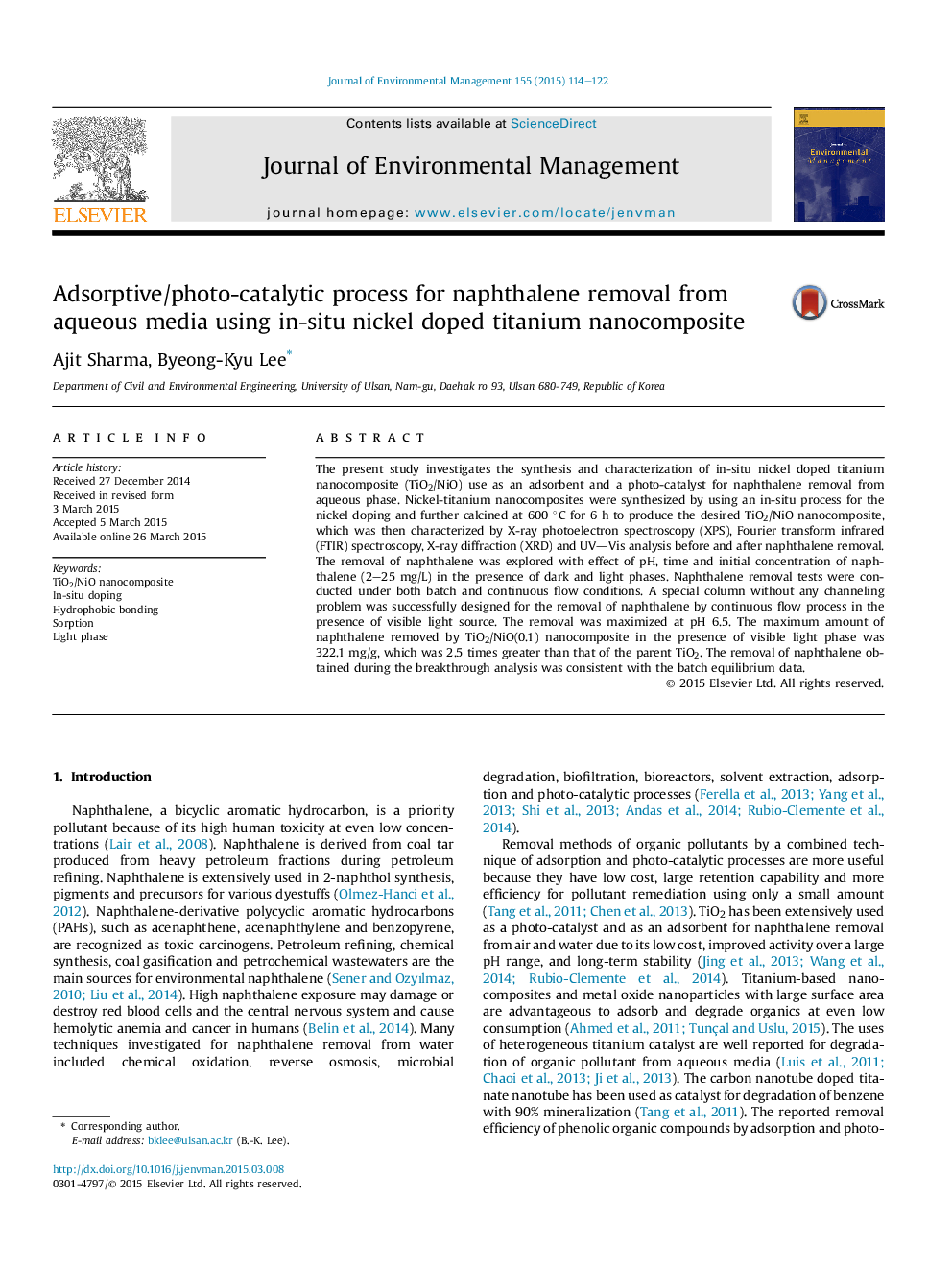| کد مقاله | کد نشریه | سال انتشار | مقاله انگلیسی | نسخه تمام متن |
|---|---|---|---|---|
| 1055604 | 1485257 | 2015 | 9 صفحه PDF | دانلود رایگان |

• Nickel–titanium nanocomposites were synthesized by in-situ nickel doping.
• Naphthalene was sorbed onto the hydrophobic basal surface of the nanocomposite.
• Naphthalene was photo-catalytically degraded on the surface of the nanocomposite.
• A column without channeling was designed for continuous naphthalene removal.
The present study investigates the synthesis and characterization of in-situ nickel doped titanium nanocomposite (TiO2/NiO) use as an adsorbent and a photo-catalyst for naphthalene removal from aqueous phase. Nickel-titanium nanocomposites were synthesized by using an in-situ process for the nickel doping and further calcined at 600 °C for 6 h to produce the desired TiO2/NiO nanocomposite, which was then characterized by X-ray photoelectron spectroscopy (XPS), Fourier transform infrared (FTIR) spectroscopy, X-ray diffraction (XRD) and UV—Vis analysis before and after naphthalene removal. The removal of naphthalene was explored with effect of pH, time and initial concentration of naphthalene (2–25 mg/L) in the presence of dark and light phases. Naphthalene removal tests were conducted under both batch and continuous flow conditions. A special column without any channeling problem was successfully designed for the removal of naphthalene by continuous flow process in the presence of visible light source. The removal was maximized at pH 6.5. The maximum amount of naphthalene removed by TiO2/NiO(0.1) nanocomposite in the presence of visible light phase was 322.1 mg/g, which was 2.5 times greater than that of the parent TiO2. The removal of naphthalene obtained during the breakthrough analysis was consistent with the batch equilibrium data.
Figure optionsDownload as PowerPoint slide
Journal: Journal of Environmental Management - Volume 155, 15 May 2015, Pages 114–122